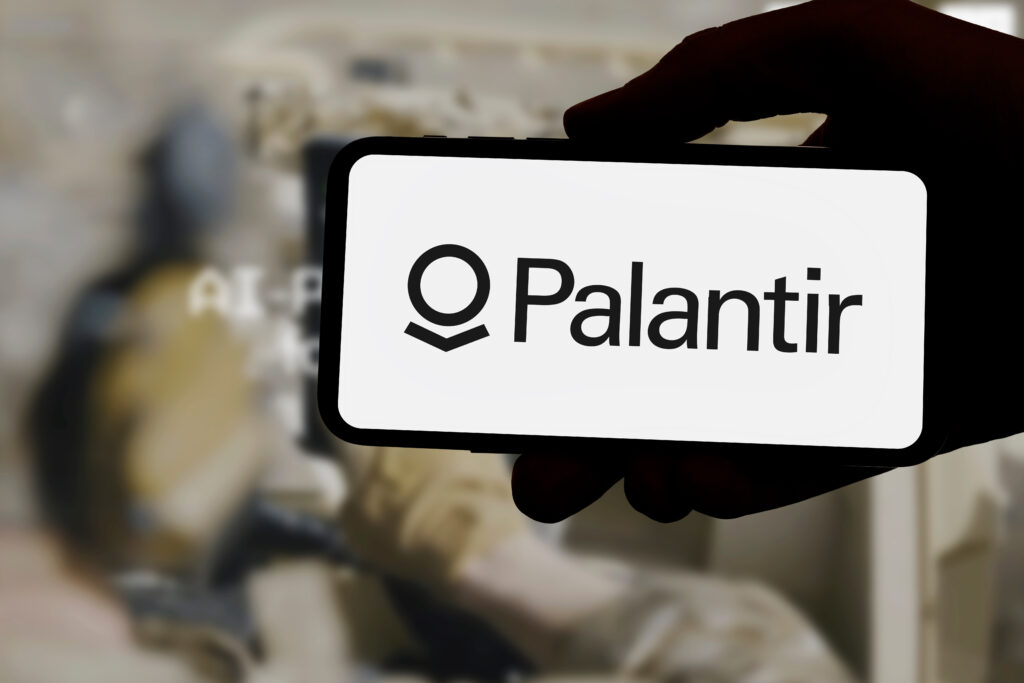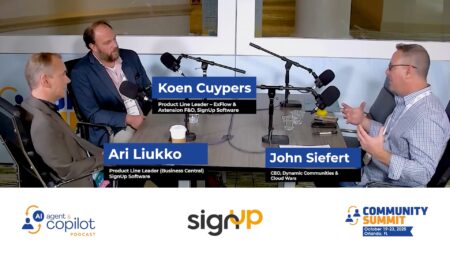
Hang on to your hats, high-growth fans, because the Palantir hypergrowth phenomenon is about to crash the Cloud Wars Top 10 party after the 21-year-old iconoclast posted its first $1-billion quarter on 48% growth and guided to even higher growth for Q3.
I’m not sure if a 21-year-old company can qualify as a unicorn, but if not, then the Dean of Definitions ought to overhaul what “unicorn” means because if ever a single company stood far, far apart from others in its field — and even in related fields — it is this company that pretty much eschews direct sales, triggered the “Ontology” trend, talks about culture the way other software companies talk about tech stacks, and has amassed a market cap equal to the combined valuations of SAP and Snowflake.

AI Agent & Copilot Summit is an AI-first event to define opportunities, impact, and outcomes with Microsoft Copilot and agents. Building on its 2025 success, the 2026 event takes place March 17-19 in San Diego. Get more details.
Here’s a look at some Palantir Q2 highlights, and please trust me when I say I have triple-checked for typos:
- total revenue up 48% to $1.004 billion;
- U.S. commercial revenue up 93% to $306 million;
- U.S. government revenue up 53% to $426 million;
- closed 42 deals of $10 million or more, and 66 of $5 million or more; and
- U.S. commercial “remaining deal value” (similar to RPO) up 145% to $2.8 billion.
So exactly what, you might be asking, does Palantir do to generate that astonishing growth? With every software company in the world aggressively working to exploit the AI Revolution for its benefit, how has Palantir managed to harness that buoyant energy?
From the company’s Q2 earnings call earlier this month, here’s CRO and Chief Legal Officer Ryan Taylor — and I’m starting to think that Palantir is the only publicly traded company in history to have (a) an exec with those dual roles and (b) an exec with those dual roles open an earnings call.
“Our tremendous second quarter results demonstrate how Palantir is redefining what is possible with enterprise AI. We remain maniacally focused on value creation for our customers,” said Taylor before sharing some of the highlights listed above.
Taylor then described how Palantir helps customers pull together and access data across disparate data stores and technologies while also compensating for the inadequacies of LLMs.
“As AI continues to relentlessly advance, the market has become increasingly aware of the most important and fundamental technical reality: LLMs, on their own, are at best a jagged intelligence divorced from even basic understanding,” Taylor said in a broad swipe at a key component of the AI Revolution.
“In one moment, they may appear to outperform humans in some problem-solving task — but in the next, they make catastrophic errors no human would ever make. By contrast, our Ontology is pure understanding, concretized in software. This is reality, not rhetoric, and enterprises are experiencing this reality keenly. LLMs simply don’t work in the real world without Palantir. This is the reality fueling our growth.”
Now, since LLMs have become a top priority for CEOs and boards of directors, it’s pretty darn bold for a software exec to say that LLMs “don’t work in the real world without” that exec’s software.
Yet Taylor said it — and while Palantir’s results don’t specifically show that his claim is accurate, those results certainly do show that Palantir is doing something of massive importance to its customers and their ability to compete and win in the future.
For example:
“Citibank shared that the customer onboarding process and relevant KYC [know your customer] and security checks that once took them 9 days now takes seconds,” Taylor said.
“Fannie Mae recently announced they’re working with Palantir on decreasing the time to uncover mortgage fraud from 2 months down to seconds, saving the U.S. housing market millions in future fraud losses.”
And Taylor added this powerful endorsement from the CEO of a major automotive company:
Lear Corporation recently signed a 5-year extension. Over the past 2.5 years, they have leveraged Foundry and AIP to support over 11,000 users and more than 175 use cases, including proactively managing their tariff exposure, automating multiple administrative workflows and dynamically balancing their manufacturing lines. Their CEO highlighted that their enterprise-wide adoption gives them, “A first-mover advantage in the automotive industry, which will be difficult to replicate.”
Yeah, pretty impressive stuff. And here are two more customer anecdotes from Taylor:
We continue to focus on delivering AI production impact, evidenced by the strength of new starts and expansions at existing customers. We’re seeing new starts with higher ambition and existing customers expand their work at a faster rate.
A health care company completed a boot camp in April, then signed an $88 million TCV deal a month later to coordinate and automate patient care across facilities. An American telecom company started working with us in 2022 and has increased their contract 10x since then and is now projecting hundreds of millions in cost savings.
Final Thought
We’ve all heard the old bromide about how if something seems too good to be true, it probably is. But while Palantir’s relatively sudden ascendance — it is, after all, 21 years old — is certainly jarring, those customer stories (and the company offered plenty of others during the Q2 call) should blow away any doubt about Palantir’s credibility and remarkable potential.
I’ll leave you with this comment from CTO Shyam Sankar about Palantir’s deep involvement in bringing the power of AI to heavy industries:
Warp Speed, our modern manufacturing operating system built on AIP, continues to deliver for our industrial customers, from nuclear companies to the defense industrial base. With MRP Speed, a component of Warp Speed, one of our customers remarked that balancing the production line has shifted from 1 day to 1 hour.
We have seen a dramatic set of opportunities open up in U.S. shipbuilding as America gets serious about fixing its maritime industrial base. China built more ships last year than we have built cumulatively since the end of World War II. Now the mighty American engine of innovation is spinning up and tackling this problem head-on.
If those kinds of stories about the transformative power of AI don’t stir your imagination a bit, I’m not sure what to suggest.
For my part, I’m certain that the Cloud Wars audience will, in the very near future, begin to get to know this distinctly unique company much, much better.
Ask Cloud Wars AI Agent about this analysis









